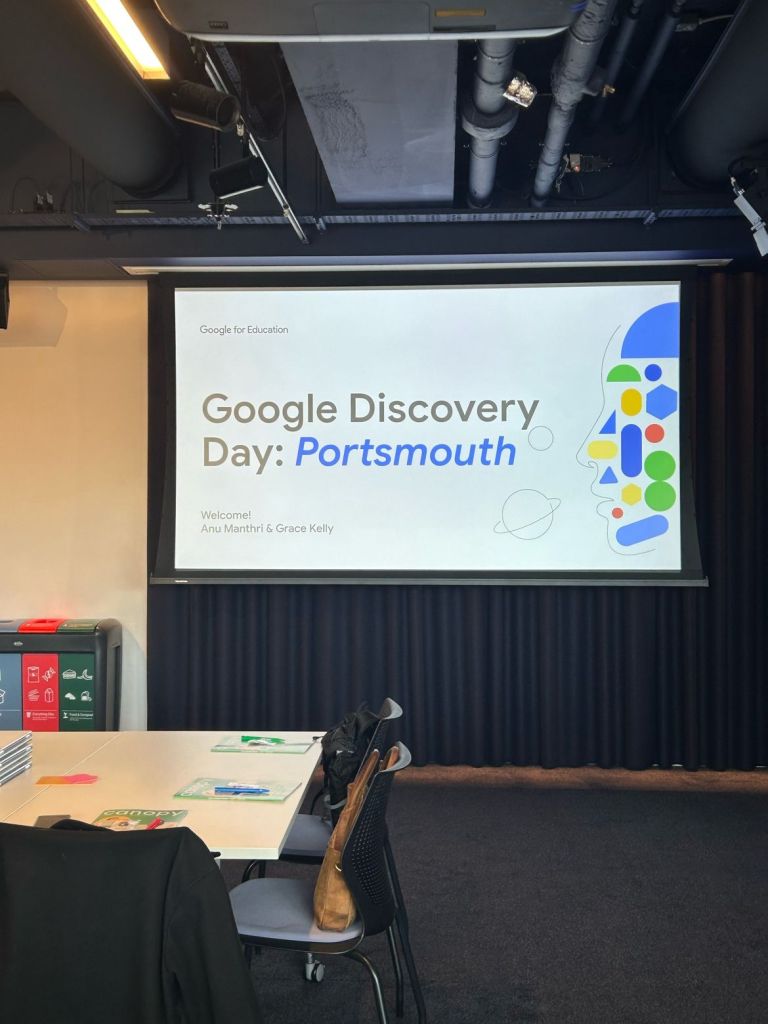
I was lucky, thanks to a kind invite from Gemma Gwilliam, a colleague from the Digital Futures Group (DFG), to join staff from several Portsmouth schools in a visit to the Google offices in London. Now I note my school largely uses Microsoft however I have made use of Google as the primary platform in previous schools I have worked with. For me, the focus for all schools should be using the best tool for the job and therefore this may involve using Google and Microsoft tools at different times and for different jobs. In this post, I would like to share just a couple of my key takeaways from the event.
Accessibility
This was definitely one of the key areas for the event in discussing the various gaps which exist within education, whether they are academic performance gaps or digital gaps. The gap related to disadvantaged students, in particular, was discussed but also gaps in relation to accessibility related to special educational needs and disabilities were also raised, including a visit to the Google Accessibility Discovery Centre (ADC). It was key for discussions and the various sessions which were delivered that technology, including Google technology, has such potential to help us with narrowing these gaps but in itself this presents a bit of a paradox as we would need to first address the gap of access to reliable infrastructure, devices, support, etc.
Artificial Intelligence (AI)
Unsurprisingly AI was on the list of discussion points and I was really happy to hear some of the same messages I have provided being reiterated. I liked the example used in terms of how a generative AI solution works in particular. We as humans when given a question use the information we have absorbed to predict the answer, and a generative AI solution isn’t that much different. I also liked the comment in relation to hallucinations being a term we should avoid however my concern has always been about this anthropomorphising genAI solutions whereas on this occasion it was raised that it was providing an answer we didn’t expect or which was simply wrong; Would we want our students claiming they had simply hallucinated or is a wrong answer a wrong answer? The key here was definitely that AI will increasingly make its way into our daily workflows and the suggestion was that for many of us, it will simply appear in the products we already use and therefore will be almost transparent to us. This seems to ring a bell as we have been using AI for a while in our spellcheckers, preference functionality in Amazon and Netflix and our search engines, yet have never really identified it as being AI as opposed to being simply how the platform works.
Networks and sharing
One of the key takeaways from this event as with so many other events I have attended is the power of a group of people sharing. We might not all operate in the same context in terms of our schools, or have the same views, but together sharing ideas, successes and failures, we are all better collectively for it. David Weinbergers quote continues to be my go-to quote: “The smartest person in the room is the room”. The more we share, the more we come together and discuss, accepting disagreement as much as we accept agreement, being brave and encouraging diverse people and views, the better we all are.
Context is king
One of the other points which really stuck with me in the event was in a presentation which talked about educational research. The key thing which chimed with me was a warning regarding people who quote that “research says…..”. I have heard this so often however the reality is that most research is limited in scope to be suggestive in terms of the context, impact, application, etc. That’s not to discount research as educational research is very important, but we mustn’t lose sight of the importance of context and how something that succeeded or failed in one content, may do the absolutely opposite in a different context. Education is simply too complex with too many moving parts, the students, the teachers, the parents, the school and many more variables which means that research can be very helpful but it will never provide a cause and effect. So it’s a great guide and provider of direction but never an out-and-out proof of what will work across all schools, students, etc, in general.
Conclusion
I very much enjoyed the event and feel I took quite a bit from it. My day-to-day largely does involve Microsoft however I try to avoid referring to my school as a Microsoft school. We seek to use the tools which have the best impact so it was great to see and hear what Google have to offer and there definitely was a lot that they can offer. And, an opportunity to network with staff from other schools and contexts is always valuable. This I suppose is why I believe so strongly in the Digital Futures Group which myself and Gemma are part of, and without which I am not sure this opportunity would have arisen for me. The more networks like this that exist the better, and hopefully the DFG will help show some of the potential impact and point the way for others looking to set up similar networks.

